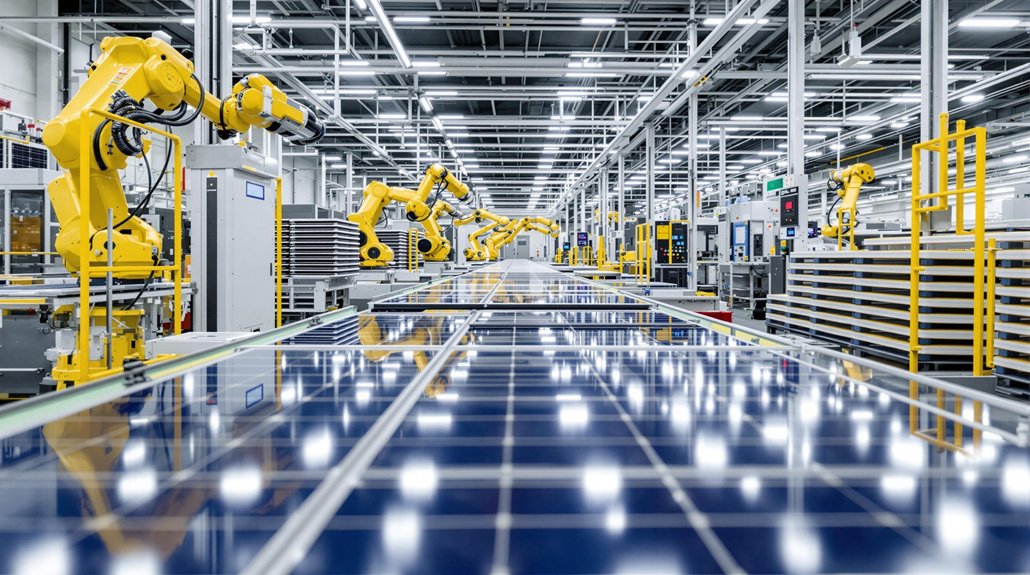The cost to manufacture a single solar panel ranges from $70 to $200, with silicon wafers eating up nearly half that expense. Manufacturing complexity, technology choices, and production scale all influence the final price tag. Monocrystalline panels command a 15-20% premium over polycrystalline versions, while adding PERC technology tacks on another 5-10%. Location and regulatory requirements further complicate the cost equation, but understanding the details reveals some fascinating economic realities.

While solar panels may seem like simple slabs of silicon and glass, manufacturing them is anything but cheap or straightforward. The raw materials alone will make your wallet weep – silicon wafers eat up nearly half the total cost, and that’s before you even think about the glass, aluminum frame, and all those fancy electrical bits. We’re talking $20-25 per kilogram just for the high-purity silicon used in monocrystalline panels. Ouch.
Manufacturing solar panels is a pricey puzzle, where silicon wafers alone devour half your budget before adding other essential components.
But wait, there’s more. Setting up a production facility is like buying a small island. A decent-sized 100 MW production line? That’ll be $10-20 million, thank you very much. The specialized equipment for cell production costs anywhere from $500,000 to $5 million. And don’t forget about those perky quality testing machines – another few hundred thousand dollars right there. The skilled workforce requires constant training to keep up with technological advances.
Size matters in solar manufacturing. A lot. Bigger facilities can slash costs by 20-30% compared to their smaller counterparts. The magic number seems to be around 500 MW of annual capacity – anything less and you’re basically throwing money away. The big boys with their gigawatt-scale facilities? They’re laughing all the way to the bank with their bulk purchasing power. ISO certifications are required to maintain quality standards and enhance market credibility.
Technology choices make a huge difference too. Want those fancy monocrystalline panels? That’ll be 15-20% more expensive than polycrystalline. Add some PERC technology, and you’re looking at another 5-10% premium. But hey, at least they’re more efficient, right? The DC electricity produced must be converted to AC for home use.
Then there’s the fun stuff – regulations, certifications, and testing. Because apparently, you can’t just slap together some silicon and glass and call it a day. Environmental regulations, safety standards, and intellectual property licensing all take their bite.
And let’s not forget about geography – labor costs, energy prices, and transportation expenses vary wildly depending on where you set up shop. The market’s no picnic either, with raw material prices bouncing around like a kid on sugar and trade policies changing faster than fashion trends.








